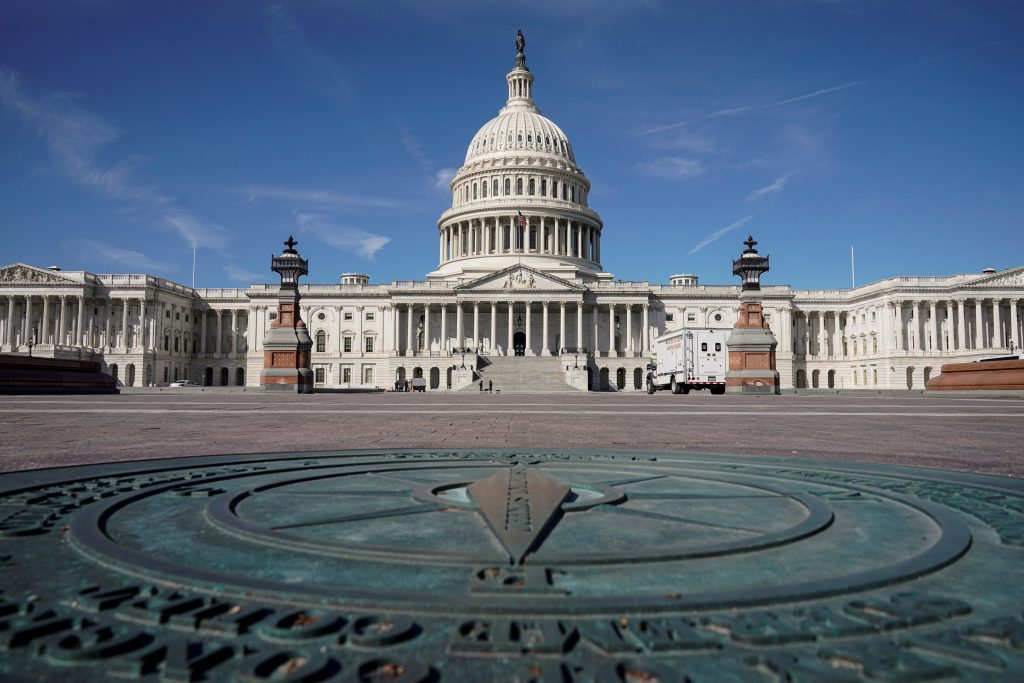JFK Birth Centennial Ending on Assassination Anniversary

A year of events marking the 100th anniversary of President John F. Kennedy’s birth came to a close Wednesday, exactly 54 years after his assassination.
National park rangers laid a wreath outside Kennedy’s childhood home in Brookline, Massachusetts, and there were speeches from officials, such as former Massachusetts Gov. Michael Dukakis. The event also included a 21-gun salute by an honor guard.
The solemn commemorations fell on the anniversary of Kennedy’s assassination in Dallas on Nov. 22, 1963.
The observances were held at what is now known as the John Fitzgerald Kennedy National Historic Site administered by the National Park Service.
Jason Atsales, a lead park ranger at the site, told the Boston Globe that 2017 has been one of the “busiest years at the site” since it opened in 1969.
“With JFK’s centennial celebration, and the release of the JFK files just a few weeks ago, it may have sparked some new interest,” he said.
The nation’s 35th president was born in the leafy Boston suburb on May 29, 1917. Over the past year, numerous conferences and other events have been held worldwide to examine JFK’s legacy and imagine his impact had he survived.
The ceremony Wednesday drew around 60 visitors, Atsales said.
Below is The Associated Press’s original article on the assassination of the 35th president:
DALLAS, TX., NOV. 22 (AP) – President John F. Kennedy, thirty-sixth president of the United States, was shot to death today by a hidden assassin armed with a high-powered rifle.
Kennedy, 46, lived about an hour after a sniper cut him down as his limousine left downtown Dallas.
Automatically, the mantle of the presidency fell to Vice President Lyndon B. Johnson, a native Texan who had been riding two cars behind the chief executive.
There was no immediate word on when Johnson would take the oath of office.
Kennedy died at Parkland Hospital, where his bullet-pierced body had been taken in a frantic but futile effort to save his life.
Lying wounded at the same hospital was Governor John Connally of Texas, who was cut down by the same fusillade that ended the life of the youngest man ever elected to the presidency.
Connally and his wife had been riding with the president and Mrs. Kennedy.
The first lady cradled her dying husband’s bloodsmeared head in her arms as the presidential limousine raced to the hospital.
“Oh, no,” she kept crying.
Connally slumped in his seat beside the president.
Police ordered an unprecedented dragnet of the city, hunting for the assassin.
They believed the fatal shots were fired by a white man about 30, slender of build, weighing about 165 pounds, and standing 5 feet 10 inches tall.
The murder weapon reportedly was a 30-30 rifle.
Shortly before Kennedy’s death became known, he was administered rites of the church. He had been the first Roman Catholic president in American history.
Even as two clergymen hovered over the fallen president in the hospital emergency room, doctors and nurses administered blood transfusion.
Kennedy died of a gunshot wound in the brain at approximately 1 p.m., CST, according to an announcement by acting White House Press Secretary Malcolm Kilduff.
The new president, Lyndon Johnson, and his wife left the hospital a half hour later. Newsmen had no opportunity to question them.
The horror of the assassination was mirrored in an eyewitness account by Sen. Ralph Yarborough, D-Tex., who had been riding three cars behind Kennedy.
“You could tell something awful and tragic had happened,” the senator told newsmen before Kennedy’s death became known. His voice breaking and his eyes red-rimmed, Yarborough said:
“I could see a secret service man in the president’s car leaning on the car with his hands in anger, anguish and despair. I knew then something tragic had happened.”
Yarborough had counted three rifle shots as the presidential limousine left downtown Dallas through a triple underpass. The shots were fired from above — possibly from one of the bridges or from a nearby building.
One witness, reporter Mal Couch, said he saw a gun emerge from an upper story of a warehouse commanding an unobstructed view of the presidential car.
Kennedy was the first president to be assassinated since William McKinley was shot in 1901.
It was the first death of a president in office since Franklin D. Roosevelt succumbed to cerebral hemorrhage at Warm Springs, Georgia, in April 1945.
To Read The Full Story
Are you already a subscriber?
Click "Sign In" to log in!

Become a Web Subscriber
Click “Subscribe” below to begin the process of becoming a new subscriber.

Become a Print + Web Subscriber
Click “Subscribe” below to begin the process of becoming a new subscriber.

Renew Print + Web Subscription
Click “Renew Subscription” below to begin the process of renewing your subscription.





